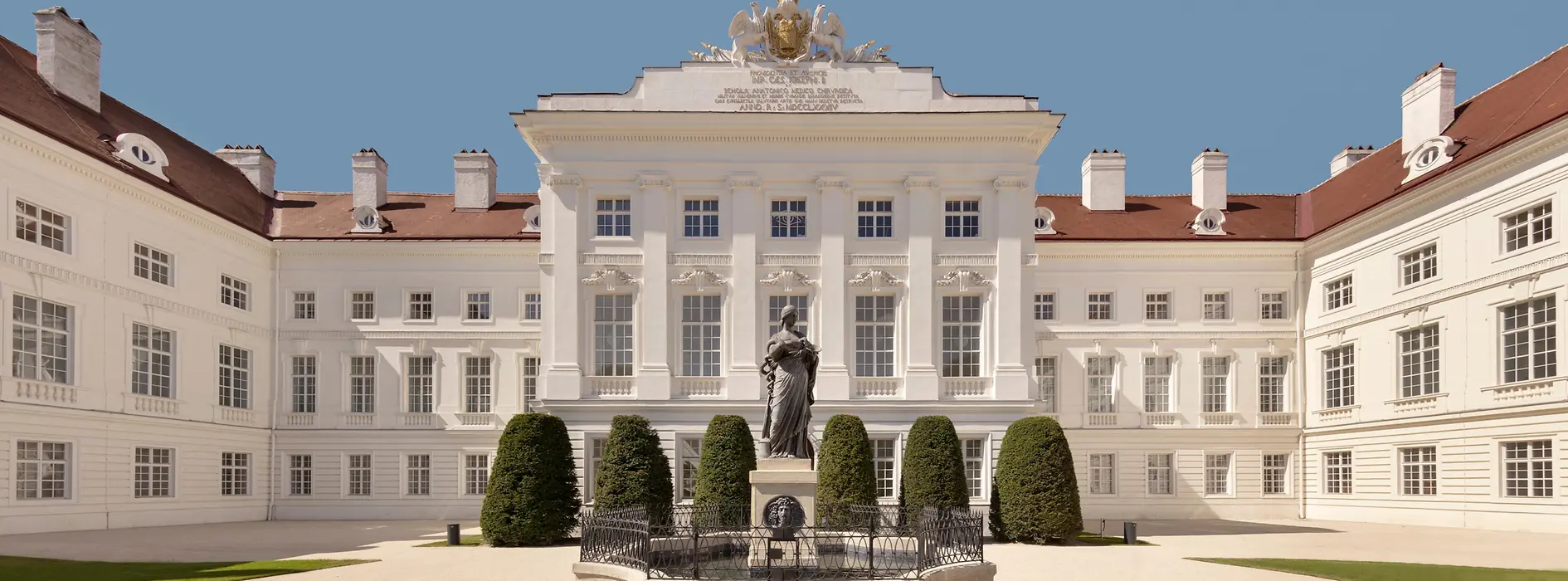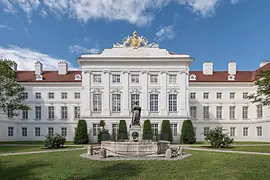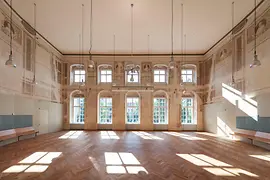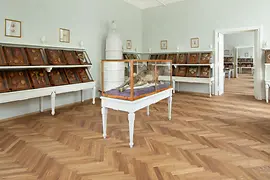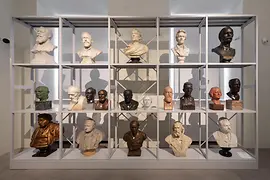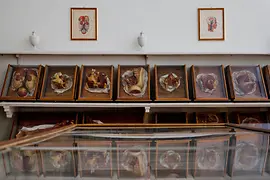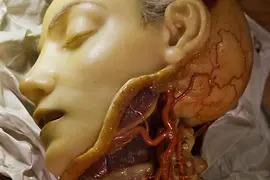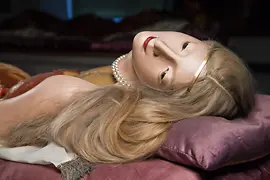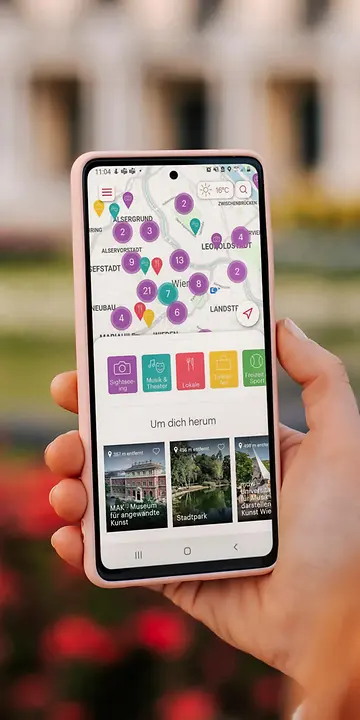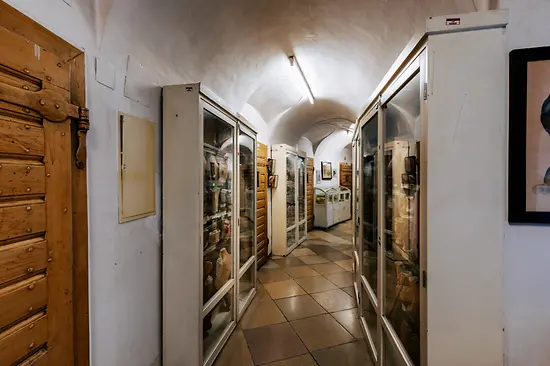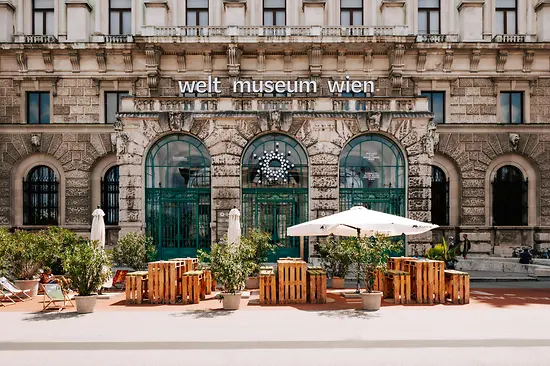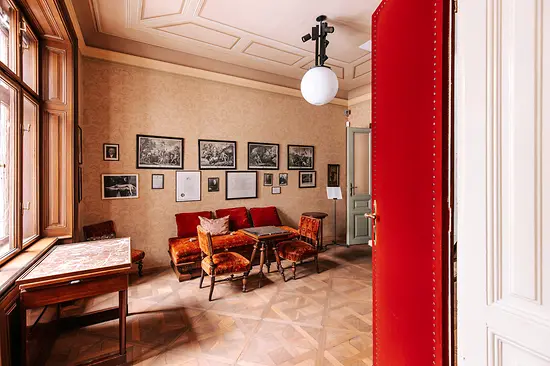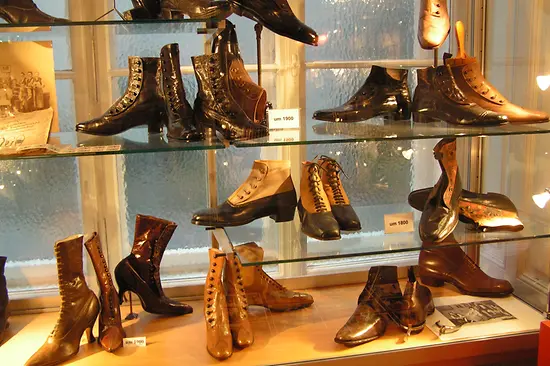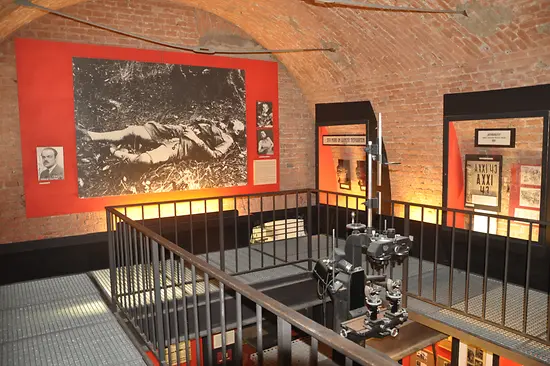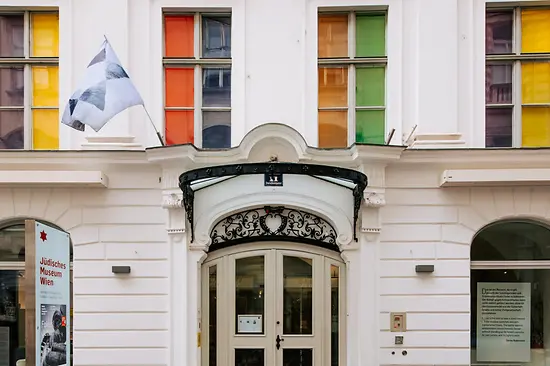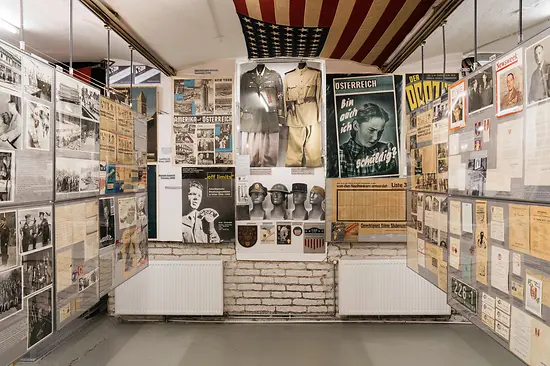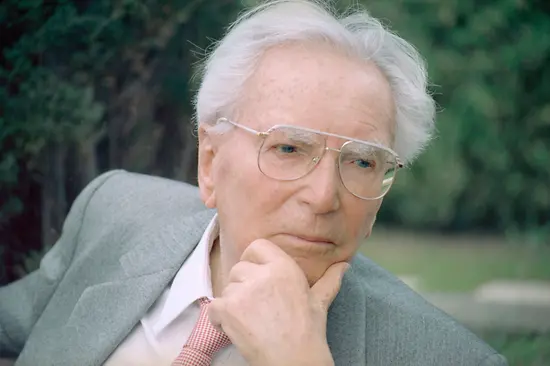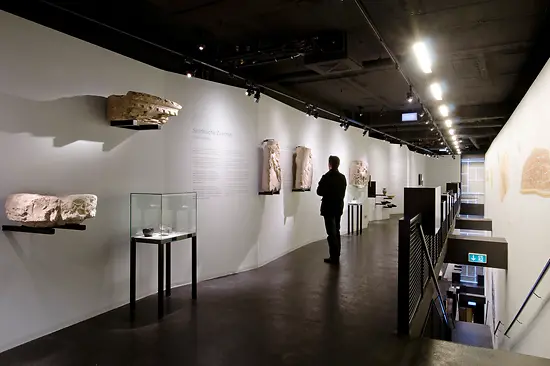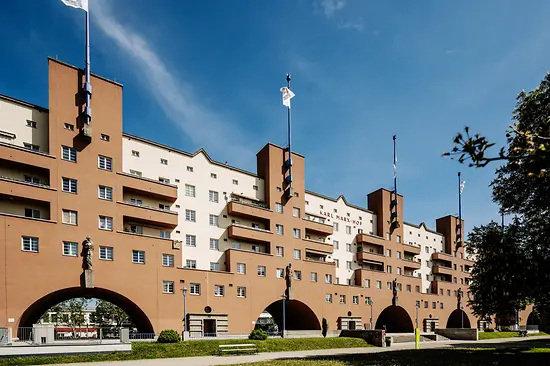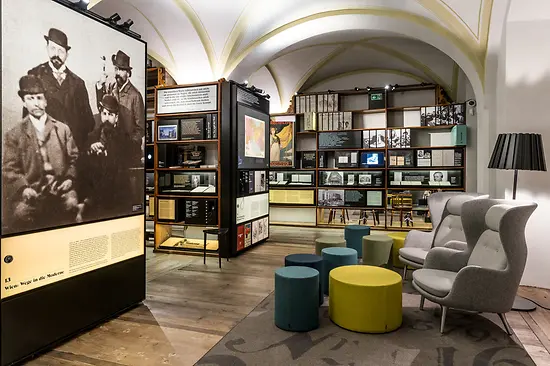Josephinum
After almost four years of renovations, the Josephinum opened its doors again in September 2022. The totally renovated and enlarged museum in Vienna-Alsergrund, which houses the collections of the Medical University of Vienna, offers around 1,000 square meters of exhibition area following the refurbishment. The heritage-listed jewel from the Classicism period was comprehensively refurbished and extensively returned to its original condition. A special highlight is the semicircular, nine meter-high historic auditorium. Its false ceiling from the 1940s was removed and original frescoes revealed. The forecourt and entrance area of the building were also redesigned.
From wax models to the Sisi needle file
The Josephinum, which opened in 1785, houses one of the world's most outstanding collections of medical history. A central feature are the 1,200 world-famous anatomical wax models ordered and purchased by Emperor Joseph II in Florence. The precious objects were once laboriously transported to Vienna and are now exhibited in seven rooms in original display cases made of rosewood and Venetian glass.
Moreover, numerous other important objects of medical history can be seen, such as instruments, pictures, books, archives, manuscripts, and bequests. Around 2,500 objects are contained in the collection's display and storage cases. Well-known exhibition pieces include: The world's first endoscope (1806), the dissected stomach on which Theodor Billroth performed the world's first successful gastric resection in 1880, the collection of surgical instruments of Giovanni Alessandro Brambilla, personal physician to the emperor and first director of the museum, the famous Gall's skull as well as the Seligmann fragments, the presumed skull parts of Ludwig Van Beethoven. The collection also includes a handwritten curriculum vitae of Sigmund Freud and the needle file with which Empress Elisabeth was murdered in Geneva in 1898.
Numerous objects are being exhibited for the first time since the reopening. In addition to the presentation of historical objects, the museum concept combines a university collection depot with an adaptable exhibition space and also addresses current bioethical debates. The Josephinum also houses a hugely extensive library, which was established in 1786.
Vienna’s contribution to medical history
The Josephinum can look back over a long tradition: Joseph II had a military academy of medicine and surgery built here in 1785 in order to train doctors and midwives under a new scheme for civil and military deployments. Alongside the Collection of Anatomical Pathology in the so-called Madhouse Tower (also established by Joseph II), the Josephinum is one of the most important centers of medical history in Vienna. The representatives of the "Viennese School", which researched and practiced in Vienna, made an outstanding contribution to the development of medicine between the 18th and 20th centuries.
Tip: Go on a tour to discover the highlights of the permanent exhibition including wax models – more information
- Währinger Straße 25, 1090 Wien
- info@josephinum.ac.at
- https://www.josephinum.ac.at/
Vienna City Card
Discount valid for all ticket categories / Standard ticket price: 15€
Opening times
- We, 10:00 - 18:00
- Th, 10:00 - 20:00
- Fr, 10:00 - 18:00
- Sa, 10:00 - 18:00
- on open days on holidays, 10:00 - 18:00
Guided tours
During one-hour tours, guides give insights into the unique collection of anatomical wax models as well as the highlights of the permanent exhibition.
Fixed tours in German (with advance reservation) take place on Thursday (6:30 p.m.) and Saturday (11:00 a.m.). Guide fee per person (excl. entrance fee): 5 euros.
For group tours (max. 25 persons) or tours in English, please contact info@josephinum.ac.at.
Accessibility
no steps (Double swinging doors 77 cm wide)
fine gravel path through the garden; Entrance door opens automatically.
Seeing eye dogs allowed
Wheelchair accessible restroom available.
Exhibition rooms: no steps, can be reached by elevator.
